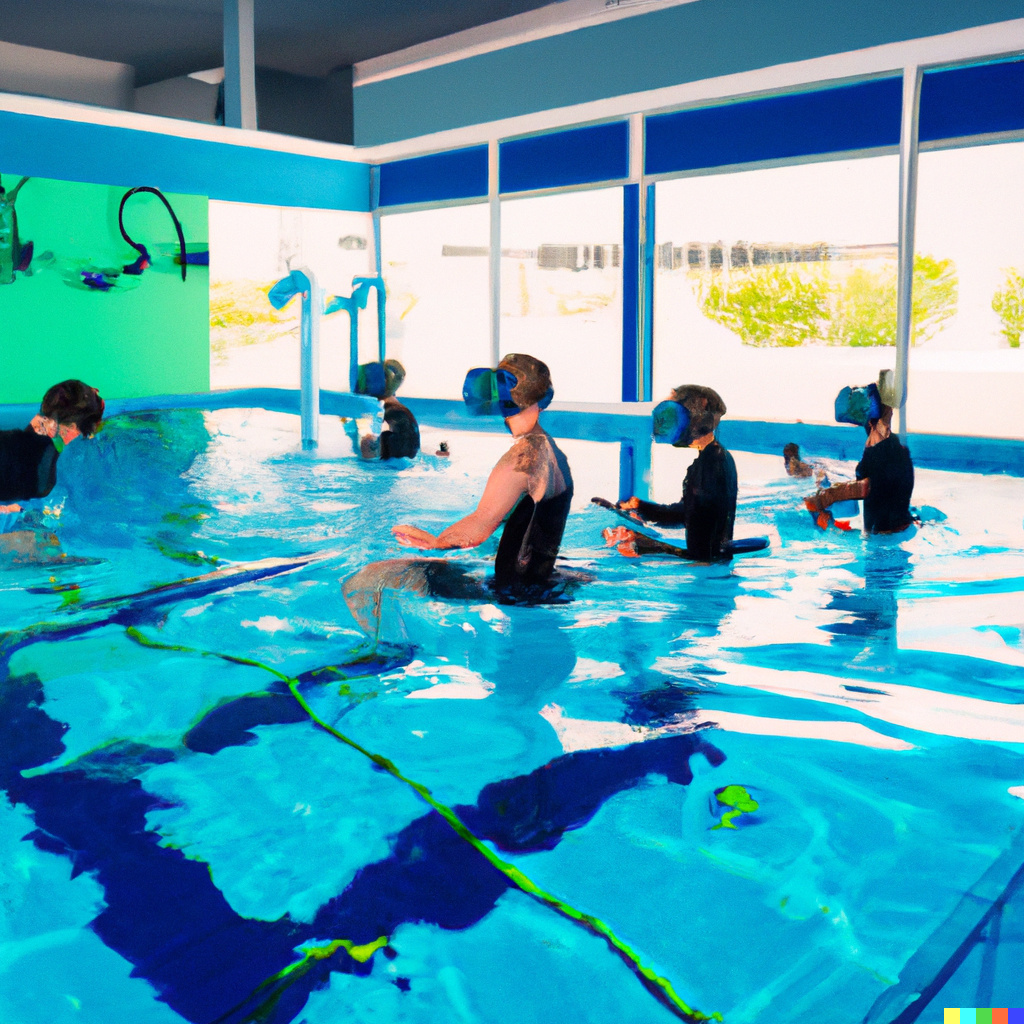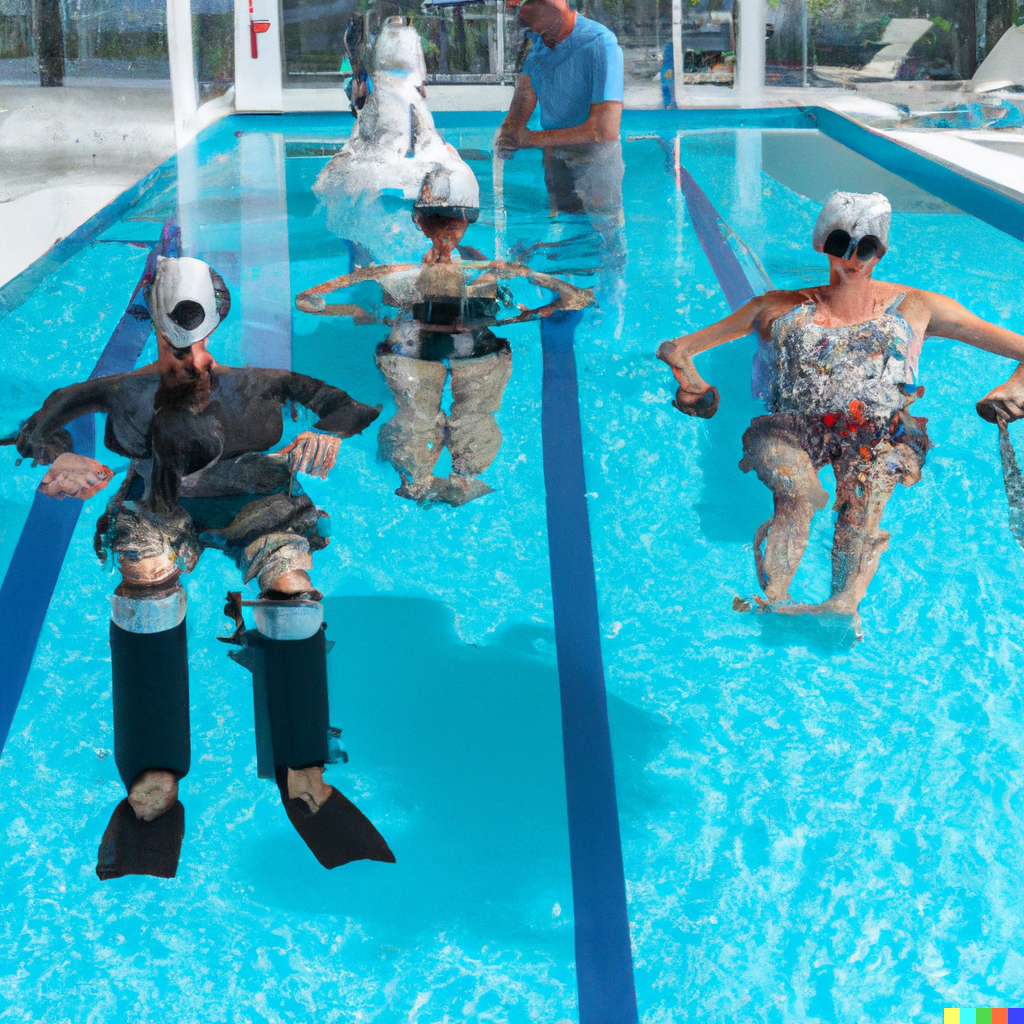Thanks for your contribution to discussing innovation in aquatic exercise.
Find out more on the details in some of the research studies connected to the Hydro Functional team here:
The Hydro Functional Knee Pain and Aquatic Exercise Insights Report analysed the input of over 500 people to determine the top 10 trends in aquatic exercise for people with knee pain - find our more here
Interested in finding out more about the Exercise is Medicine movement - check out some of the reasons why it started including a call to merge the healthcare and fitness industries and the resources connected to the current movement.
Thanks to everyone at the Aqua Alliance Industry Forum for their participation in the brainstorming the enablers for innovation, at individual, team, organisational and systems levels, in the aquatic industry.
Here are the top 10 enablers:
In planning the next 10 years of innovation and change in aquatic exercise, participants in the Aqua Alliance Industry Forum also reviewed the challenges ahead. The top barriers to innovation included
Thanks again for your contribution to the innovation session and please get in touch if there's any way we can support you.
For a full list of references, please scroll to the end.
Let us know how we can help you innovate, with the forum notes, with other ideas or with one of our programs
We brainstormed some ideas combining technology and aquatic exercise using OpenAI: check out the results here


BatterhamS, Heywood S and Keating J (2011) Systematic review and meta-analysis comparingland and aquatic exercise for people with hip or knee arthritis on function,mobility and other health outcomes BMC Musculoskeletal Disorders, 12:123
Bidonde,J., Busch, A. J., Webber, S. C., Schachter, C. L., Danyliw, A., Overend, T. J.,... & Cochrane Musculoskeletal Group. (1996). Aquatic exercise training forfibromyalgia. Cochrane Database of Systematic Reviews, 2014(10).
Depiazzi JE, Forbes RA, Gibson N, Smith NL, Wilson AC BoydRN and Hill K. (2019) The effect of aquatic high-intensity intervaltraining on aerobic performance, strength and body composition in anon-athletic population: systematic review and meta-analysis. Clin Rehab 33 (2)
Hall J, Swinkels A, Briddon J, McCabeCS. Does aquatic exercise relieve pain in adults with neurologic or musculoskeletaldisease? A systematic review and meta-analysis of randomized controlled trials.Arch Phys Med Rehabil 2008;89:873-83.
Heywood, S., McClelland, J.,Mentiplay, B., Geigle, P., Rahmann, A., & Clark, R. (2017). Effectivenessof aquatic exercise in improving lower limb strength in musculoskeletalconditions: a systematic review and meta-analysis. Archives of physicalmedicine and rehabilitation, 98(1), 173-186.
Hoskin, K., Dodd, K., Chan, S. P., Rosengarten, S., & Heywood, S.(2013). Aquatic exercise compared to contrast therapy with shallow watertreadmill running to assist recovery in elite australianrules footballers. International Journal of Aquatic Research and Education,7(4), 5.
Jackson, M., Kang, M., Furness, J., & Kemp-Smith, K. (2022).Aquatic exercise and mental health: A scoping review. Complementary Therapies inMedicine, 66, 102820.
Lima, T. B., Dias, J. M., Mazuquin, B.F., da Silva, C. T., Nogueira, R. M. P., Marques, A. P., ... & Cardoso, J.R. (2013). The effectiveness of aquatic physical therapy in the treatment offibromyalgia: a systematic review with meta-analysis. Clinical Rehabilitation,27(10), 892-908.
Marinho-Buzelli, A. R., Bonnyman,A. M., & Verrier, M. C. (2015). The effects of aquatic therapy on mobilityof individuals with neurological diseases: a systematic review. Clinical Rehabilitation, 29(8), 741-751
Martinez-CarbonellGuillamon, E., Burgess, L., Immins, T., Martinez-Almagro Andreo, A., &Wainwright, T. W. (2019). Does aquatic exercise improve commonly reportedpredisposing risk factors to falls within the elderly? A systematic review. BMCgeriatrics, 19(1), 1-16.
McNamaraRJ, Alison JA, and McKeough ZJ. Water-based exercise in chronic obstructivepulmonary disease Physical Therapy Reviews. 2011;16 (1) 25-30
Moritz,T. A., Snowdon, D. A., & Peiris, C. L. (2020). Combining aquaticphysiotherapy with usual care physiotherapy for people with neurologicalconditions: A systematic review. Physiotherapy Research International, 25(1),e1813.
Perraton,L., Machotka, Z., & Kumar, S. (2009). Components of effective randomizedcontrolled trials of hydrotherapy programs for fibromyalgia syndrome: Asystematic review. Journal of Pain Research, 165-173.
Pinto,C., Salazar, A. P., Marchese, R. R., Stein, C., & Pagnussat, A. S. (2019).The effects of hydrotherapy on balance, functional mobility, motor status, andquality of life in patients with Parkinson disease: a systematic review and meta‐analysis. PM&R, 11(3), 278-291..
Terrens,A. F., Soh, S. E., & Morgan, P. E. (2018). The efficacy and feasibility ofaquatic physiotherapy for people with Parkinson’s disease: a systematic review.Disability and rehabilitation, 40(24), 2847-2856.
Waller B,Lambeck J and Daly D (2009):Therapeutic aquatic exercise in the treatment oflow back pain: a systematic review. Clinical Rehabilitation 2009; 23: 3–14
Waller,B., Ogonowska-Slodownik, A., Vitor, M., Lambeck, J., Daly, D., Kujala, U. M.,& Heinonen, A. (2014). Effect of therapeutic aquatic exercise on symptomsand function associated with lower limb osteoarthritis: systematic review withmeta-analysis. Physical therapy, 94(10), 1383-1395.